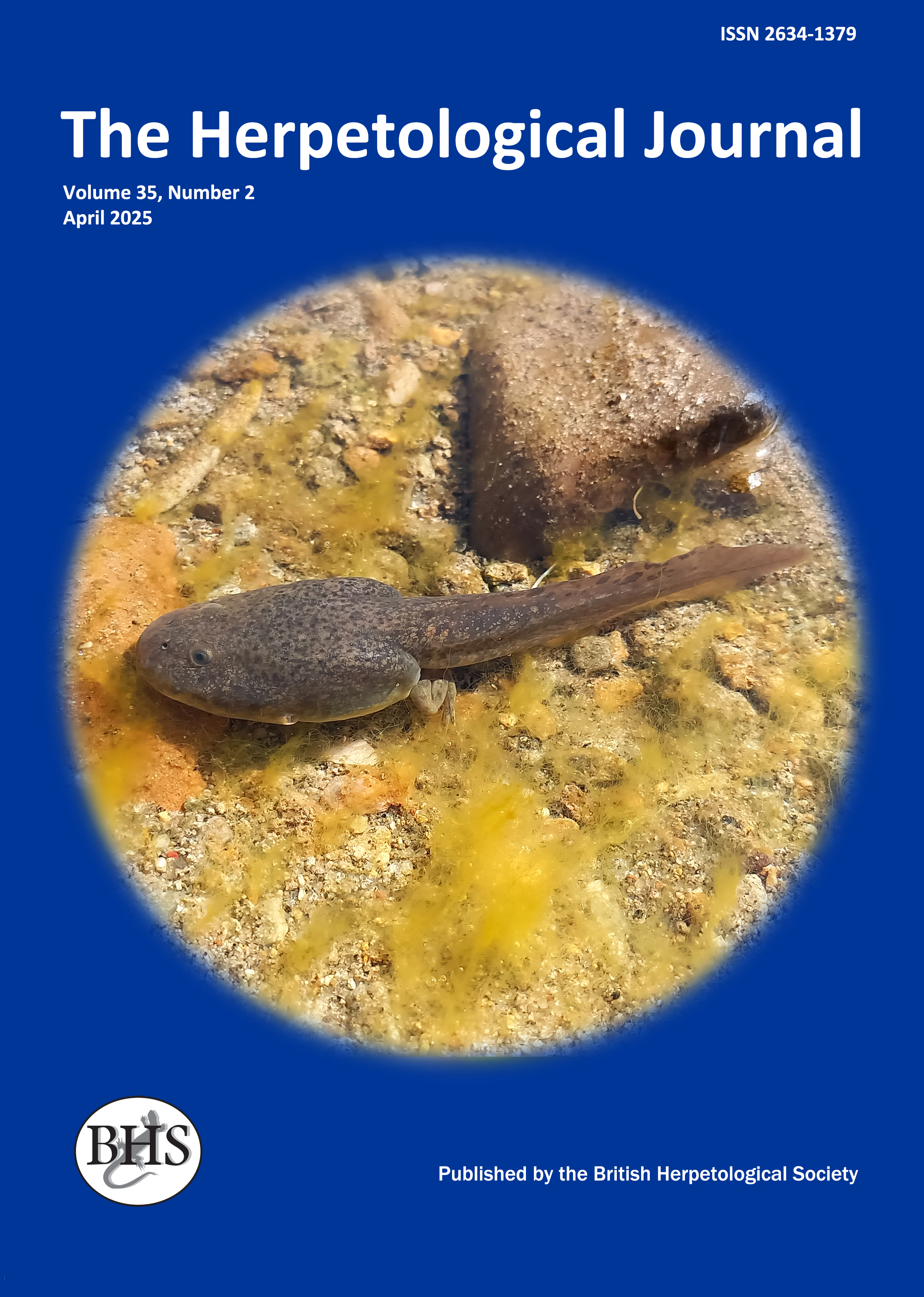
The Herpetological Journal
The Herpetological Journal is the Society's prestigious quarterly scientific journal. Articles are listed in Biological Abstracts, Current Awareness in Biological Sciences,Current Contents, Science Citation Index, and Zoological Record.
ISSN 0268-0130
2021 Impact Factor from Clarivate for the Herpetological Journal is 1.194, an increase of 0.332 from 2020.
pdf 02. The plasticity of metamorphic traits in the Chinese brown frog tadpoles fails to obey Richards' hypothesis
24 downloads
Subscription / purchase required
https://doi.org/10.33256/33.4.97102
pp. 97-102
Authors: Wen Hao Shi, Hai Ying Li, Wen Long Lu & Tong Lei Yu
Abstract: According to Richards' hypothesis, algae or cells in the intestinal tract has been considered the cellular inhibitory factor, when they fall off and hide in the faeces, excreted together with the faeces. If the animals feed on these faeces with algae or cells, and bring them into their systems, then the cellular inhibitory factor would play the main responsibility for growth inhibition. Here, we surveyed the effects of different combinations of faeces and food level on growth rates, survivorship, larval age and mass, and SVL at metamorphosis of the Chinese brown frog Rana chensinensis. Our results showed that food level can influence the length of the larval period of Chinese brown frog tadpoles, suggesting that delayed metamorphosis is caused by low food supply, indicative of a function of effective energy. Our data also clearly indicated that tadpoles in the presence of faeces were on average larger in body mass than those in the absence of faeces, which failed to obey Richards' hypothesis. Moreover, our results found evidence that faeces have a positive effect on the growth rate of tadpoles. Thus, there is no evidence for Richards' hypothesis, suggesting that this novel mechanism is selected for where coprophagy is likely to prove profitable, irrespective of the abundance of alternative food.
Keywords: Rana chensinensis, Richards' hypothesis, faecal material, mass at metamorphosis, growth rate

